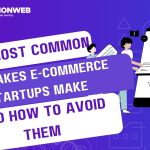Every entrepreneur planning to launch an e-commerce store always develop cold feet, especially when on a lean budget. You have to understand that launching an e-commerce store doesn’t require breaking the bank. With careful planning and the right strategies, you can launch an e-commerce store on a budget.
So it is best you develop the mindset that launching an online store is more accessible than ever. We have various strategies you can adopt to start out strong and with good success rate. I will advise you to kindly go through this article until the very end.
11 Practical Steps To Launch An E-commerce Store On A Budget
1. Choose A Niche:
The best way to start out strong and to increase your odd of succeeding is to choose a profitable e-commerce niche. You can’t have an e-commerce store that isn’t known for being the go-to for a specific kind of item. You need to learn from the brick and mortar businesses down street, that has display expertise for having all you need on a particular set of items.
Conducting a profitable e-commerce niche research helps you to show that, you as a business owner embodied the following: expertise, experience, authority and trust(EEAT). What this simply means for your customers is that they can trust any recommendation you give, because you are an authority in that field with proven years of experience.
Note: Use free tools like Google Trends, AnswerThePublic, or Facebook Audience Insights to identify gaps in the market.
2. Choose the Right E-commerce Platform:
Your choice of an e-commerce platform determines how much you will spend upfront and in the long run. Keep in mind that e-commerce solutions often involve recurring payments, not one-time fees. Be sure to carefully review the pricing terms and check for any hidden costs to avoid unexpected expenses. Also ensure these platforms have features that will support the growth of your business.
Core Features Of An E-commerce Store:
• Product Management: ability to create, edit, and manage products, including product descriptions, prices, images, and inventory.
• Order Management: ability to manage orders, including processing payments, shipping, and handling returns.
• Payment Gateway Integration: integration with various payment gateways, such as PayPal and Stripe.
• Shopping Cart: a secure and user-friendly shopping cart that allows customers to add and remove products.
• Check Out Process: a streamlined checkout process that reduces cart abandonment rates.
•UI/UX(User interface and experience) features: This feature enable easy to navigate experience even on a first time visit/usage. A responsive design that supports all devices type.
• Marketing and promotion features: This feature enable you to manage discounts and promotions, email and social media marketing integration and abandoned cart recovery.
• Analytics And Reporting Features: This feature enable you to track customer behaviour, manage marketing campaigns, compare product performance and manage sales and inventory.
• Security And Scalability Features: This feature enable you to secure customer data and to manage backup and recovery.
Affordable E-commerce Platforms:
• Shopify Starter ($5/month) – Ideal for selling on social media.
• WooCommerce (Free + Hosting Cost) – A great WordPress plugin with full customization.
• Big Cartel (Free Plan Available) – Best for small businesses with a limited product range.
• Square Online (Free Plan Available) – Simple and integrated with Square payments.
Note: It is advisable to go for the cheapest you can get and upgrade as you gain traction.
3. Get a Budget-Friendly Domain & Hosting:
A domain name (yourstore.com) is crucial for branding. Many platforms offer free subdomains, but investing in a custom domain makes your store look professional.
Where To Buy Cheap Domain Name And Hosting?
Harmonweb offer you one of the cheapest domains and hosting solutions you can get online. If you are unsure about the best domain name extension and hosting solution for your needs, consider consulting expert-curated resources and articles from Harmonweb that can help clarify your doubts and to make an informed decision. Or you can reach out to our customer support for help on the best line of action to take.
4. Use Free or Low-Cost Website Themes:
E-commerce platforms provide free themes that look professional and are easy to set up.
Best Free E-commerce Themes:
• Shopify: Debut, Dawn (modern and responsive).
• WooCommerce: Storefront (customizable and free).
• Big Cartel: Minimal themes for small stores.
Note: These themes are usually made to be responsive to all devices. The best part is that you don’t have to be an expert or have the knowledge of coding to come up with a great design. When you start making profit, you can go for premium themes with advance features and customization.
5. Source Products Without High Upfront Costs:
If you do not want to spend too much on inventory, consider dropshipping or print-on-demand. These options enable you to avoid tying money down on any goods, and you still make your profit doing less.
Affordable Product Sourcing Options:
• Dropshipping: Partner with suppliers via AliExpress, SaleHoo, or Spocket.
• Print-on-Demand: Sell custom designs on t-shirts, mugs, and phone cases using Printful or Printify.
• Wholesale Suppliers: Use Alibaba or Faire to buy in bulk at low costs.
6. Leverage Free Marketing & SEO Strategies:
Leveraging free marketing and SEO strategies can be a game-changer for businesses on a budget. One effective way to start is by creating high-quality, engaging content that resonates with your target audience. This can include blog posts, videos, podcasts, and social media posts that provide value, insights, and solutions to your customers’ problems.
Another key strategy is to optimize your website and online presence for search engines. This includes conducting keyword research to identify relevant terms and phrases, optimizing your website’s meta tags, titles, and descriptions, and building high-quality backlinks from authoritative sources. You can also leverage free SEO tools like Google Analytics, Google Search Console, and SEMrush to track your website’s performance, identify areas for improvement, and stay ahead of the competition.
Budget-Friendly Marketing Tactics:
• Social Media Marketing: Promote on Facebook, Instagram, and TikTok.
• SEO Optimization: Use free tools like Ubersuggest and Google trends to find keywords.
• Email Marketing: Start with free tools like Mailchimp (up to 500 contacts).
• Content Marketing: Write blog posts and create YouTube videos to drive organic traffic.
• Influencer Collaborations: Partner with micro-influencers who accept free products in exchange for promotion.
7. Set Up Free & Low-Cost Payment Options:
Configure payment gateways like PayPal, stripe, or square to accept online payment. Set up shipping options and integrate them with your e-commerce platform.
8. Automate Tasks to Save Time & Money:
Use free or budget-friendly automation tools to handle repetitive tasks.
Best Free Business Automation Tools:
• Canva – Design product images and social media posts.
• Hootsuite – Schedule social media posts in advance.
• Google Sheets – Track orders and inventory.
• Trello – Organize tasks and projects efficiently.
Note: These free tools help you to cut down on cost of hiring and also help you to get things done more efficiently.
9. Optimize Your Store for Conversions:
Optimizing your store ensure that everything is running fine and they are upto standard. It usually start with ensuring you have the best quality of images, SEO optimized content and functional store etc.
Free Ways to Boost Conversions:
• Use High-Quality Images (Pexels & Unsplash offer free product images).
• Write Clear Product Descriptions (Highlight benefits, not just features).
• Offer Free Shipping (Increases conversions; factor the cost into product pricing).
• Add Customer Reviews (Boosts trust and credibility).
10. Use Free Analytics Tools to Track Performance:
Tracking data helps you understand what works and what doesn’t. Getting this information can help you to identify your SWOT analysis (strength, weakness, opportunity and threat) better. This is a balance into your competitor gap analysis and research.
Best Free Analytics Tools:
• Google Analytics (Free) – Tracks website traffic and user behavior.
• Facebook Pixel (Free) – Helps with retargeting ads.
• Hotjar (Free Plan) – Heatmaps to see where visitors click most.
11. Scale Up as You Grow:
Once you start generating revenue, reinvest profits into expanding your store.
Smart Ways to Grow on a Budget:
• Run Facebook and Google Ads with small budgets.
• Add upsells & cross-sells to increase order value.
• Offer loyalty programs to retain customers.
• Expand to multiple sales channels like Etsy, Amazon, or eBay.
Conclusion
Launching an e-commerce store on a budget is completely possible with the right approach. It usually start with choosing affordable platforms, free marketing tools, and low-cost product sourcing methods, you can build a profitable online business without huge upfront costs. Focus on organic traffic, customer experience, and automation to maximize success while keeping expenses low.
The keyword in this strategies here is planning and leverage. Keep this in mind, as they are the two greatest asset to building a successful e-commerce store.





